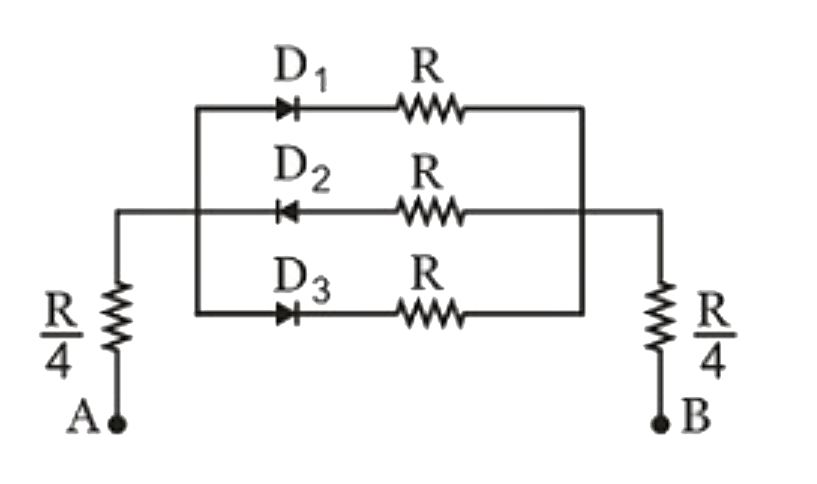A dihybrid plant with genotype PpNn. It produces four types of gametes in following number PN = 200, pn = 200, Pn = 800, pN = 800 then what is the distance between linked genes?
30 cM
10 cM
25 cM
20 cM
The correct Answer is:D
To find the distance between linked genes in the given dihybrid plant with genotype PpNn, we can follow these steps:
1. Identify the Gamete Types and Their Frequencies:
- The gametes produced are:
- PN = 200
- pn = 200
- Pn = 800
- pN = 800
2. Determine the Total Number of Gametes:
- Total gametes = PN + pn + Pn + pN
- Total gametes = 200 + 200 + 800 + 800 = 2000
3. Identify Parental and Recombinant Gametes:
- Parental gametes are the ones that are the same as the parent genotype:
- Parental gametes: Pn (800) and pN (800)
- Recombinant gametes are those that differ from the parental types:
- Recombinant gametes: PN (200) and pn (200)
4. Calculate the Total Number of Recombinant Gametes:
- Total recombinant = PN + pn
- Total recombinant = 200 + 200 = 400
5. Calculate the Distance Between Linked Genes:
- The formula to calculate the distance between linked genes (in centimorgans) is:
Distance=(Total Recombinant GametesTotal Gametes)×100
- Plugging in the values:
Distance=(4002000)×100=20 centimorgans
6. Conclusion:
- The distance between the linked genes is 20 centimorgans.
Final Answer:
The distance between the linked genes is 20 centimeters.
---
- The gametes produced are:
- PN = 200
- pn = 200
- Pn = 800
- pN = 800
- Total gametes = PN + pn + Pn + pN
- Total gametes = 200 + 200 + 800 + 800 = 2000
- Parental gametes are the ones that are the same as the parent genotype:
- Parental gametes: Pn (800) and pN (800)
- Recombinant gametes are those that differ from the parental types:
- Recombinant gametes: PN (200) and pn (200)
- Total recombinant = PN + pn
- Total recombinant = 200 + 200 = 400
- The formula to calculate the distance between linked genes (in centimorgans) is:
Distance=(Total Recombinant GametesTotal Gametes)×100
- Plugging in the values:
Distance=(4002000)×100=20 centimorgans
- The distance between the linked genes is 20 centimorgans.
The distance between the linked genes is 20 centimeters.
Topper's Solved these Questions
Similar Questions
A heterozygous individual ++ab is crossed to its revessive parent and has produced the offsprings in the following proportion.
++/ab−200
a+/ab−50
+b/ab−30
ab/ab−100
What is the expected distance between the two gene loci ?
View SolutionIndividuals homozygous for ab genes were crossed with wild type (++). The F1 hybrid thus produced was test crossed. It produces progeny in following proportion.

Now, calculate the distance between a and b genes.
View SolutionBy the cross of F1 linked dihybrid plant with a plant of genotype aabb, we get the 1300 plants out of 2000 of parental type. The distance between A and B gene is :-
View SolutionAssertion :- On the basis of Punnett square, the F2 generation of dihybrid plant will produce 16 different types of genotypes.
Reason:- In F1 generatin plant, there are four genotypes of gametes with a frequency of 25% of total gametes produced.
View SolutionThe number of different types of gametes produced from a plant with genotype Aa Bb Cc is
View SolutionNumber iof ways in which m men and n women can be arranged in a rwo so that no two women are together is m!m=1Pn Also number oif ways in which m men and n women can be seated in a row so that all the n women are together is (m=1)!n! On the basis of above informatiion answer the following question the no of ways in which 10 boys & 5 girls: seated in row so that no boy sits between girls
View SolutionNumber iof ways in which m men and n women can be arranged in a rwo so that no two women are together is m!m=1Pn Also number oif ways in which m men and n women can be seated in a row so that all the n women are together is (m=1)!n! On the basis of above informatiion answer the following question: Number of ways in which 10 boys and 5 girls can be seated in a row so that no boy sits between girls is (A) 5!×10P_5 (B) 5!×11P_5 (C) 10!×11P_5 (D) 5!×11
View SolutionA rubber company is engaged in producing three types of tyres A, B and C. each type requires processing in two plants, Plant I and Plant II. The capacities of the two plants, in number of tyres per day, are as follows: Plants A B C I 50 100 100 II 60 60 200 The monthly demand for tyre A, B and C is 2500, 3000 and 7000 respectively. If plant I costs Rs. 2500 per day, and plant II costs R. 2500 per day to operate , how many days should each be run per month to minimize cost while meeting the demand? Formulate the problem as LPP.
View SolutionA flower of tomato plant following the process of sexual reproduction produces 240 viable seeds.
Answser the following questions giving reasons :
(a) What is the minimum number of pollen grains that must have been involved in the pollination of its pistil ?
(b) What would have been the minimum number of ovules present in the ovary ?
(c) How many megaspore mother cells were involved ?
(d) What is the minimum number of microspore mother cells involved in the above case ?
(e) How many male gametes were involved in this case ?
View SolutionIn the following circuits, PN - junction diodes D1,D2andD3 are ideal for the following potential of A and B, the correct increasing order of resistance between A and B will be

(i) −10V,−5V
(ii) −5V,−10V
(iii) −4V,−12V
View Solution
